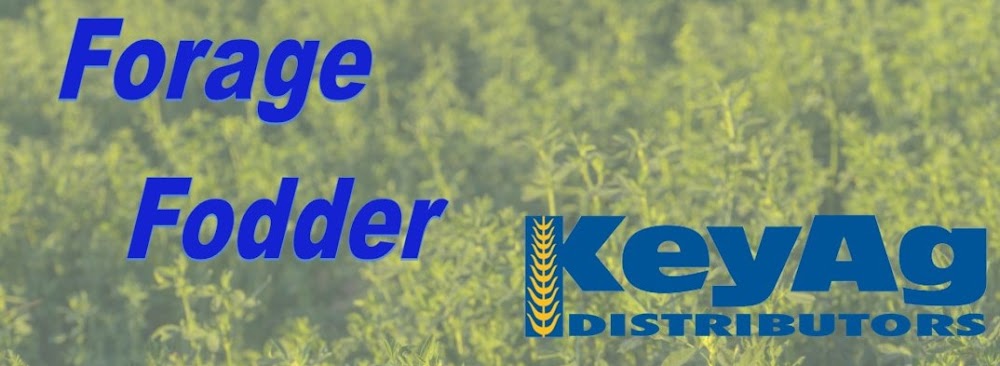Colorado—In the Aug. 31 report, compared to last report, trade activity and demand has softened. Hay trades are slow as third cutting is well underway across the state. Areas that have received a lot of rain since mid May have created challenges in putting up hay that will test. Later cut alfalfa with low test is going to be moving into the grinder markets. Producers have struggled to put up hay without any rain on it. According to Colorado Crop Progress report, alfalfa hay second cutting is 95% complete and third cutting is 39% complete.
Missouri—In the Aug. 31 report, compared to last report, the overall supply of hay is light to moderate and demand is moderate. Drought conditions are basically unchanged from last week according to the latest drought monitor. Although there is still significant movement of hay the pace has slowed from what was being seen during the peak of the drought. Improved pasture conditions and some significant baling of late summer hay has helped put many farmers in a better position now. This has also put a little pressure on the hay market and lower quality hay has seen an ever so slight decrease in prices. Higher quality hay on the other hand remains steady.
Nebraska—In the Aug. 31 report, compared to last report, alfalfa hay sold unevenly steady. Grass or meadow hay sold steady to $15 lower. Ground and delivered hay and dehydrated alfalfa pellets sold steady. Demand was light to moderate. One rule of thumb on pricing off quality feed like cane and millet hay is producers use the rule of thumb of 75% the value of alfalfa in your area. First week of new crop cornstalks on the market. This contact was written with a guarantee of baled weight less than or equal to 1,300 pounds per bale. Anything over that weight can be set off or the producers will not get paid for the extra weight—buyers’ choice. Hot, dry weather arrived during the last full week of August.
Oklahoma—In the Sept. 1 report, compared to the last report, hay is slow to steady. Not much movement across Oklahoma. The state needs some rain as drought continues to spread and to allow our hay producers to get one cutting in before fall. Next report will be released Sept. 15.
Texas—In the Aug. 25 report, compared to the last report, hay prices are mostly steady across the majority of the regions, with the exception of the south were prices were mostly firm to $5 higher. Trading activity was moderate to active on good buyer demand. Hotter than average temperatures coupled with dry conditions continue across the majority of the state. As a result, pastures and rangelands have continued to deteriorate and many stands have gone dormant. Drought conditions in the south have caused most producers to only have one cutting so far, some scattered showers have producers hopeful for a second cutting but quality may be impacted. Supplemental feeding of livestock is taking place across most of the state due to drought conditions, but the north, central, south and east have had the most impacts.. Next report will be released Sept. 8.
South Dakota—In the Sept. 1 report, compared to last report, alfalfa hay steady to weak. Moderate demand for alfalfa currently as producers are showing resistance to asking prices. CRP haying has put some pressure on the overall hay market, yet supplies of high testing alfalfa is limited this year as the drought and heat curtailed growth. Humid weather and smoky skies made for more challenges to get third cutting to dry quickly to make that really high testing hay. Row crops have fared the drought much better than the hay crops. Producers that were able to get a fourth cutting of alfalfa report tonnage to be very light. Very good demand for straw. Very hot weather for the weekend, no rain in the 10 day forecast. Corn silage harvest in full swing as the crop dried down quickly over the last two weeks.
New Mexico—In the Sept. 1 report, compared to last report, alfalfa hay steady. Trade active, demand good. Alfalfa Hay is at 80 % finished with third cutting, most producers 20% complete with fourth cutting and starting fifth cutting. The northern part of the state is in the third cutting. Some parts of the state have received scattered showers. In New Mexico, the combination of short- and long-term precipitation deficits, poor soil moisture, and impacts in the agricultural sector (eastern New Mexico) led to continued deterioration on the map across parts of the state. Hay and roughage supplies were reported as 34% very short, 28% short, 33% adequate, and 5% surplus. Stock water supplies were reported as 30% very short, 38% short, 31% adequate, and 1% surplus.
Wyoming—In the Aug. 24 report, compared to last report, hay sales sold steady. Demand was light to moderate in some areas. Hot, humid days across most of the state. Most of the second cutting is done in the east with the western area thinking of starting on second cutting. It has been a trying year for the hay producers on getting top quality hay produced with a high RFV factor when done. Some prospective buyers are rolling the dice and hoping the market will slip downward before they put in their buy orders. Sorghum grass being baled along with producers finishing up on wheat and oat harvest.
Montana—In the Aug. 31 report, compared to last report, hay sales sold steady. Demand was light to moderate. Hot, humid days across most of the state. Many contacts in the east have started on third cutting of hay with second getting started in the west. There could be one less cutting of alfalfa hay across the state this year. But if there is a late frost many producers will try to cut another cutting if the stand looks ready to be harvested.


No comments:
Post a Comment